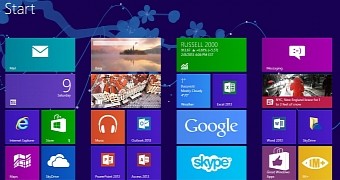Back on October 26, 2012, Microsoft presented Windows 8, a new operating system that brought not only one of the biggest redesigns for the Windows platform in history but also pretty much the biggest problems that the company had to deal with after the launch of a new Windows version.
There’s no doubt that Windows 8 was one of the most controversial products released by Microsoft in its history, mostly because of the changes that the company did on the desktop, pushing its flagship operating system away from the traditional PC.
With Windows 8, Microsoft introduced the new Modern UI and removed the Start menu, which proved to be a very popular feature for many people out there who wanted to access their apps fast, without the need to switch to the touch-optimized Start screen.
The results of all these changes were pretty much expected: people described Windows 8 as one of the most confusing Windows operating systems ever released by Microsoft, so early adoption was well below expectations. Many users decided to stick to Windows 7 or even Windows XP, while organizations across the world preferred to wait until a new OS came out to migrate.
What happened next?
At first, Microsoft denied the poor Windows 8 adoption figures, explaining that the new operating system was selling just like Windows 7, its predecessor, which was undoubtedly a hit. Vague figures provided by Microsoft itself indicated that Windows 8 was selling like hot cakes, but market share data revealed by researchers across the world pointed otherwise.
However, Redmond acknowledged the issues experienced with Windows 8 and released Windows 8.1 to fix some of the annoyances that users reported after switching to the modern operating system.
The Start button was brought back in Windows 8.1 in what was considered the very first attempt to fix the desktop in a modern platform that failed to attract users, just like it happened with Windows Vista.
In fact, Windows 8 was often considered the second Vista, mostly because users refused to install it due to the difficulties that others experienced with it. Low adoption figures turned Windows 8 into a flop that forced Microsoft to speed up development of a new and revamped operating system.
Windows revamped from the ground up
Microsoft hopes that Windows 10 is the operating system that will finally convince users to upgrade from old versions such as XP and 7 and will bring improvements in the areas where Windows 8 failed to do it.
What’s more, Windows 10 is pretty much the first big attempt to fix the desktop, so it comes with a Start menu, as well as many other requested features, such as multiple desktops and a notification center.
Windows 10 is much more focused on consumer feedback than any other OS version on the market, and it tries to bring the traditional PC back in the game by pushing touch-oriented features to the background. In this new OS version, the focus is entirely on the desktop, but touch-optimized options aimed at tablets are also in the works to help Microsoft compete in both worlds.

 14 DAY TRIAL //
14 DAY TRIAL //